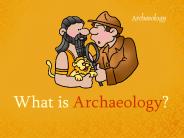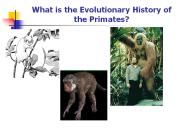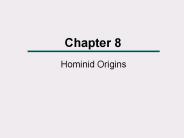Dental Fossils PowerPoint PPT Presentations
All Time
Recommended
Define in your own words what a fossil is and what a ... Edward Drinker Cope. Earl Douglass. Summary. A fossil is the imprint of a bone, plant, or creature ...
| PowerPoint PPT presentation | free to view
Equine Dentistry The ... Short, square brachydont teeth Diet of succulent forage Five toes From Ancient to Modern Horse Evolved/adapted to live on grasslands Began in ...
| PowerPoint PPT presentation | free to view
Title: What is archaeology? (for kids) Author: Lin Donn Keywords: Fossils Artifacts Description: Illustrated by Phillip Martin Last modified by: cdealy
| PowerPoint PPT presentation | free to download
Consider definitions of health for individuals, families, communities ... smoking, alcohol, BP, obesity, dental caries community health promotion model ...
| PowerPoint PPT presentation | free to view
Dental caries (tooth decay) -Plaque consists of bacterial biofilms ... Tooth enamel degenerates. Peptic ulcers -Helicobacter pylori is the main cause ...
| PowerPoint PPT presentation | free to view
9. Postorbital Constriction. 10. Facial Width. 11. Dental Arcade (Box, U, or intermediate) ... Postorbital constriction. Facial width. Zygomatic arch. Shape of ...
| PowerPoint PPT presentation | free to view
The Nonproteobacteria Gram-Negative Bacteria. Includes G- bacteria ... S. mutans- primary cause of dental caries. S. pneumoniae - most common cause of pneumonia ...
| PowerPoint PPT presentation | free to view
Only 200 species? In different conditions. they grow differently. Lots of colors. Photosynthetic ... bacterial culture plates, time-release pills, and dental ...
| PowerPoint PPT presentation | free to view
East African fossil remains assigned to the genus Australopithecus (or in some ... of large animals, such as antelope, were discovered near the fossils displaying ...
| PowerPoint PPT presentation | free to view
Fossils are any evidence of plants or animals that have existed in the past and ... However, its feathers, wings, furcula ('wishbone') and reduced fingers are all ...
| PowerPoint PPT presentation | free to view
General Features / Trends of Apes / Humans ... a small gibbon-like ape. Humankind Emerging, 7th ed., p. 179. Propliopithecus. Oligocene ...
| PowerPoint PPT presentation | free to download
Miocene Hominoids. Understanding Physical Anthropology and ... frugivorous (fruits) graminivorous (grasses) Diet classifications: carnivorous (chiefly meats) ...
| PowerPoint PPT presentation | free to download
You are responsible for reading these chapters we will be discussing these s in class, however, we will not be going slow enough for students to copy word-for-word
| PowerPoint PPT presentation | free to view
Homo erectus was the first hominid species to be found in different places ... Dubois found a cranium and a thigh-bone, the fragments were considered for a ...
| PowerPoint PPT presentation | free to view
Field Methods in Archaeology and Paleoanthropology Chapter Preview How Are the Physical and Cultural Remains of Past Humans ... Sites are even found underwater.
| PowerPoint PPT presentation | free to download
website: www.VagabondGeology.com Ancient Pathways Ancient Peoples Week 2: into Africa Week 1: beginning in East Africa
| PowerPoint PPT presentation | free to download
Chapter 9 Overview of the Fossil Primates Chapter Outline Introduction Primate Origins Paleocene Primate-like Mammals Eocene Primates Oligocene Primates Miocene ...
| PowerPoint PPT presentation | free to download
Chapter 8 Hominid Origins Chapter Outline Definition of Hominid The Bipedal Adaptation Biocultural Evolution: The Human Capacity for Culture Paleoanthropology as a ...
| PowerPoint PPT presentation | free to download
Primates and Human Origins Identify traits that distinguish primates from other mammals. Describe fossil evidence relating humans to primate ancestors.
| PowerPoint PPT presentation | free to view
This is Jeopardy Human Evolution * * Category No. 1 Category No. 2 Category No. 3 Category No. 4 Category No. 5 100 100 100 100 100 200 200 200 200 200 300 300 300 ...
| PowerPoint PPT presentation | free to download
At 29, Professor of Anatomy at Witwatersrand University, Johannesburg ... Shallow trochanteric fossa for obturator externus. Makapansgat: a third site for A.africanus ...
| PowerPoint PPT presentation | free to view
Title: No Slide Title Author: Kelly L. Moore Last modified by: Kelly L. Moore Document presentation format: On-screen Show (4:3) Other titles: Arial Times Default ...
| PowerPoint PPT presentation | free to view
Difficult to tell evolutionary relationships to later primates. ... Gibbon-like. Apes move out of Africa after 16 million years ago. Dryopithecus. Europe ...
| PowerPoint PPT presentation | free to view
Title: Kottak Subject: Anthropology / Cultural Anthropology Author: Linda Crane Last modified by: Debbie Created Date: 4/19/2001 6:09:34 PM Document presentation format
| PowerPoint PPT presentation | free to download
Generate 3D models of feeding apparatuses from turtle specimens using a CT scanner Isolate rhamphotheca from underlying bone Because keratin does not readily ...
| PowerPoint PPT presentation | free to download
The canine is the third tooth from the center of the top and bottom jaw. ... Is there a diastema (gap between the upper incisors and canines) present? ...
| PowerPoint PPT presentation | free to view
Many biological anthropologists do not use race as a term or a ... TV shows, like TLC's The Forensic Files. Patricia Cornwell, Kathy Reichs novels ...
| PowerPoint PPT presentation | free to view
What is the Evolutionary History of the Primates? 1. EOCENE 54-38 mya. Prosimian Radiations ... branched off from the prosimians much earlier than previously ...
| PowerPoint PPT presentation | free to download
Flat face and heavy brow ridges characteristic of much later 'hominids. ... Broad flat (non-prognathus) face. Small molars (not like contemporary ...
| PowerPoint PPT presentation | free to view
... chimpanzees, and humans ... Characteristics Revised Classification of Hominoids The Bipedal Adaptation Efficient bipedalism as the primary form of locomotion ...
| PowerPoint PPT presentation | free to download
Tongue Stones An Evolution Story Told by Patrick Staley Presentation Outline Legend to Science Why Use Tongue Stones to Study Evolution Parts and Features Environment ...
| PowerPoint PPT presentation | free to download
fossil evidence for hominid evolution sc.912.l.15.11
| PowerPoint PPT presentation | free to view
Title: PowerPoint Presentation Author: Dennis Last modified by: Debbie Created Date: 7/16/2002 6:58:30 AM Document presentation format: On-screen Show
| PowerPoint PPT presentation | free to download
Chapter 8 Hominid Origins Chapter Outline Early Primate Evolution Miocene Fossil Hominids Definition of Hominid The Bipedal Adaptation Biocultural Evolution: The ...
| PowerPoint PPT presentation | free to download
The skulls were scanned at a slice thickness of 0.49 mm using a bone algorithm, ... Concurrent with previous studies, skull morphology is indicative of feeding ...
| PowerPoint PPT presentation | free to download
HUMAN EVOLUTION: GENUS AUSTRALOPITHECUS & PARANTHROPUS Map of Hominid Evolution Why did bipedalism become the primary adaptation of hominids? 1.
| PowerPoint PPT presentation | free to download
Bones of antelopes, horses, and other animals with cut marks made by ... Signs that hominids scraped & smashed animal bones, like this antelope tibia, 2.5 mya ...
| PowerPoint PPT presentation | free to download
The Origin of Romantic Love. Love poems. Dates back to the first century BC in ancient Rome. ... Was recorded in Egypt 3,000 years ago. Love poems & stories ...
| PowerPoint PPT presentation | free to view
Shapes: rod, sphere, or spiral. Flagella. Examples: Rickets, rocky ... Found in stagnant H2O, ocean bottom, hot springs, sewage treatment. Part of carbon cycle ...
| PowerPoint PPT presentation | free to view
Scientists currently know that modern whales evolved from terrestrial mammals. ... flippers composed of short arm bones, flat wrist bones, and five fingers ...
| PowerPoint PPT presentation | free to view
... notochord, caudal fin rays, and what appeared to be a postanal tail and a dorsal ... hypocercal tail (with an extended ventral lobe) which suggest a trend towards ...
| PowerPoint PPT presentation | free to view
Human evolution Waikato university site http://sci.waikato.ac.nz/evolution/HumanEvolution.shtml ...
| PowerPoint PPT presentation | free to view
Important developments of the Vertebrates: brain and sense organs The ancestors of vertebrates switched from filter feeding to more active feeding, which required ...
| PowerPoint PPT presentation | free to view
Most of what we know about them came from the Fayum deposits in Western Egypt. ... in Africa diverged into two lines--the gorillas and the line that would lead to ...
| PowerPoint PPT presentation | free to view
Habitat variability and bipedalism (Potts) Reproduction and bipedalism (Lovejoy) ... A comparison of human and chimpanzee pelves. Dentition ...
| PowerPoint PPT presentation | free to view
Midterm Review. Intro to Anthropology: The Basics. Four field approach and applied ... Phyletic gradualism. Day(s): May 22. Reading: E&E Chapter 3. The Living Primates ...
| PowerPoint PPT presentation | free to view
Title: No Slide Title Author: John Steven Scheibe Last modified by: Computer Services Created Date: 11/26/1999 11:31:18 PM Document presentation format
| PowerPoint PPT presentation | free to download
The type of the new species, i.e., the specimen that serves as the standard for ... The senior author of the new species, Louis Leakey, took another tack altogether. ...
| PowerPoint PPT presentation | free to view
... have fleshy blob tongues that apprehend food, are typically territorial and ... have specialized chemosensory tongues, apprehend food with their jaws, are ...
| PowerPoint PPT presentation | free to view
Mike Riddle Answers in Genesis
| PowerPoint PPT presentation | free to view
Respiratory System Each line on a ... then the rabbit ... Muscular Skeletal Circulatory Lymphatic Digestive Female Reproductive Male Reproductive Food ...
| PowerPoint PPT presentation | free to view
AQA Chemistry Unit 1
| PowerPoint PPT presentation | free to view
Time Magazine (Nov. 7, 1977) Ramapithecus. Pithecos = Greek for ape ... Maxim D. Frank-Kamenetski, Unraveling DNA, 1997, p. 72. ...
| PowerPoint PPT presentation | free to view
The 16 CAREER CLUSTERS A Career Cluster is a grouping of occupations and broad industries based on commonalities The s will give you an understanding of each ...
| PowerPoint PPT presentation | free to view
Chapter 11 The Origin and Dispersal of Modern Humans Chapter Outline Approaches to Understanding Modern Human Origins The Earliest Discoveries of Modern Humans ...
| PowerPoint PPT presentation | free to download
Mike Riddle m.riddle@verizon.net www.train2equip.com www.icr.org Mutations Of carefully studied mutations, most have been found to be harmful to organisms,
| PowerPoint PPT presentation | free to view
























































